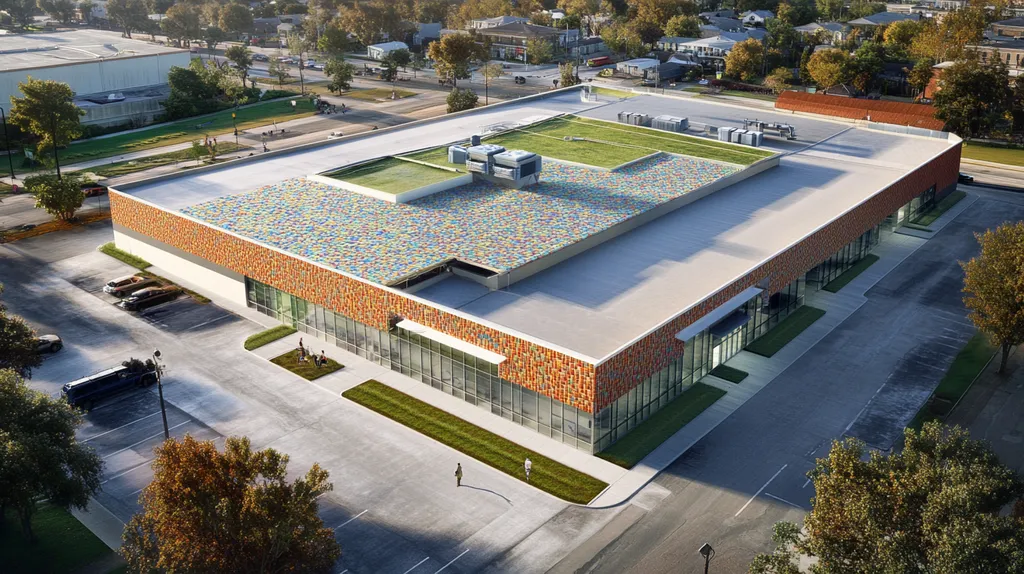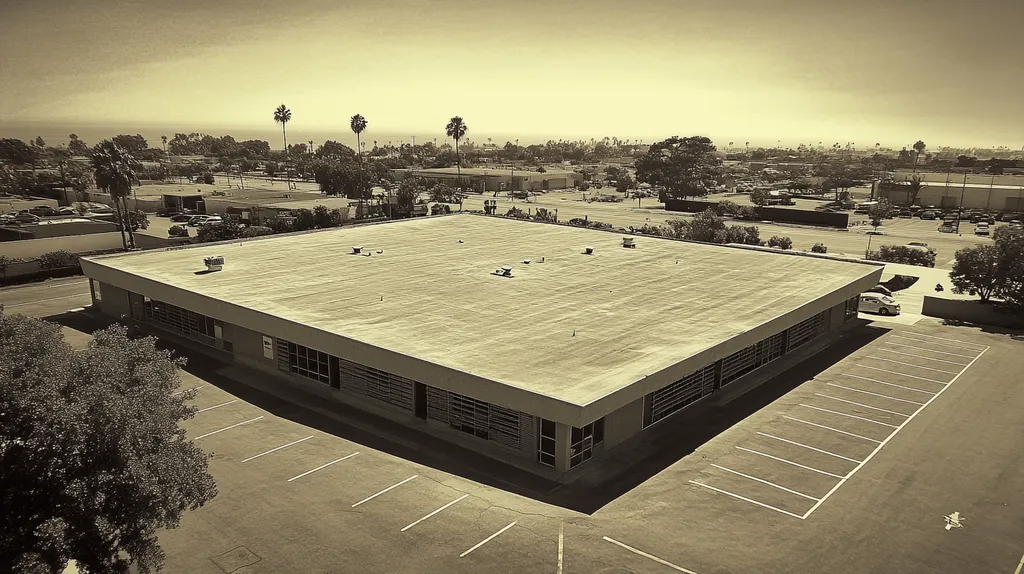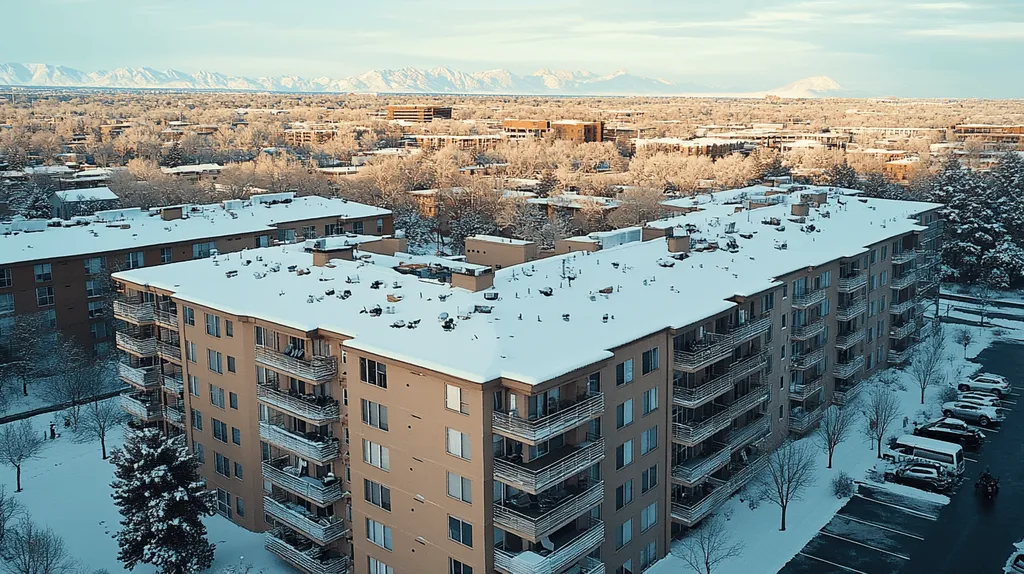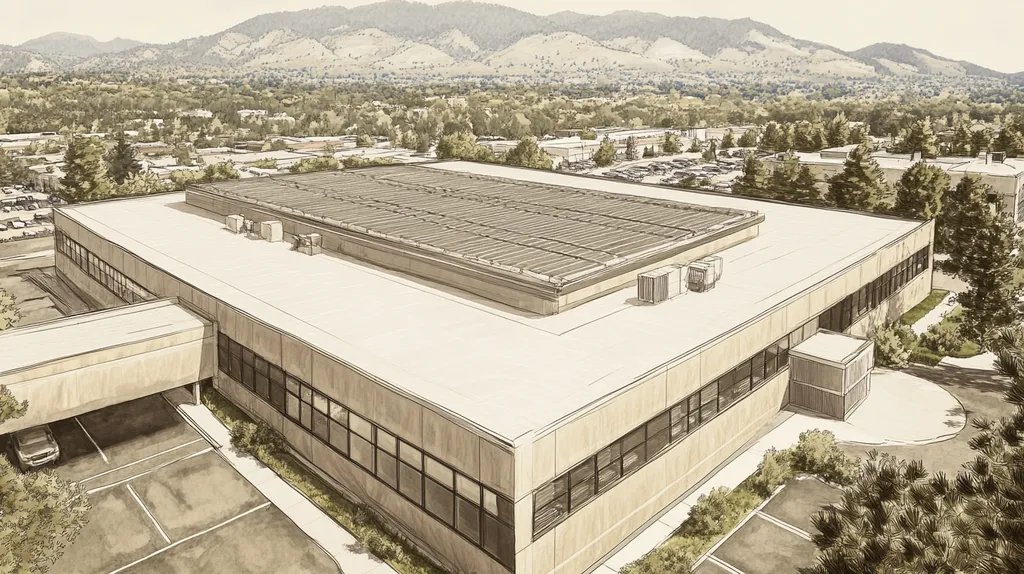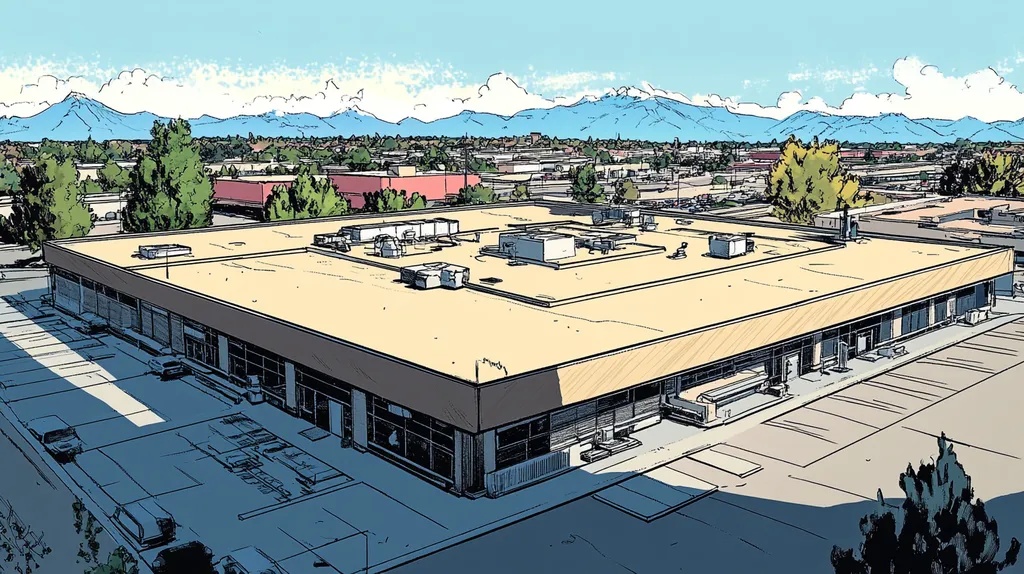Every year, thousands of workers are injured or killed in preventable roofing accidents, with falls remaining the leading cause of fatalities in industrial settings. Despite decades of safety advances, many facility managers still rely on outdated myths and misconceptions about securing roof work areas.
These misunderstandings, from the perceived adequacy of slide guards to assumptions about parapet heights, continue to put lives at risk while exposing organizations to substantial liability.
This comprehensive analysis examines six critical aspects of industrial roof safety, challenging common industry myths while providing evidence-based solutions that protect both workers and facilities.
SECTION 1: COMMON MISCONCEPTIONS
Securing industrial roof work areas is not just a regulatory requirement; it’s a vital step in safeguarding lives and property. Many facility managers cling to misconceptions that can expose their teams to unnecessary risks. Misunderstanding the effectiveness of slide guards, misusing parapets, and underestimating safe distances from unprotected edges can all lead to dangerous oversights. This section aims to clarify these misunderstandings and emphasize necessary best practices for safety.
Slide Guards as Fall Protection
Slide guards may seem like a straightforward solution for fall protection on industrial roofs, but this belief is misleading and unsafe. While slide guards can act as a warning, they are not built to actually prevent falls.
Regulations specify that fall protection systems must adhere to strict safety standards. Unfortunately, slide guards do not meet these criteria, leaving workers at risk. If an employee slips, a slide guard might allow them to slide off rather than preventing a fall, potentially resulting in severe injury or worse.
It is crucial for facility managers to recognize that effective fall protection encompasses guardrails, harness systems, and safety nets. Over-reliance on slide guards fosters a false sense of security that can ultimately place workers’ lives in jeopardy.
Proper training and usage of comprehensive fall arrest systems are essential. Facility managers should ensure their teams are well-equipped with the knowledge and resources necessary to work safely on roofs.
Parapets as Guardrails
Many mistakenly regard parapets as adequate replacements for guardrails on industrial rooftops. This assumption can lead to dire consequences for worker safety. Parapets were not engineered to serve as guardrails; guardrails are specifically designed to prevent falls.
The height and structural integrity of parapets often fall short of safety requirements. In certain situations, parapets may be lower than the minimum height necessary for effective fall prevention, leaving workers vulnerable during operations near the edge.
Moreover, parapets can deteriorate over time, leading to additional safety hazards. Routine inspections are critical to ensure their structural soundness. Facility managers must install proper guardrails that meet established safety standards.
By considering parapets as mere barriers, organizations may inadvertently compromise their safety protocols. Comprehensive fall protection strategies should always include additional systems, especially in hazardous environments.
Distance from Unprotected Edges
There is a widespread misconception about the safe distance workers should maintain from unprotected edges. Many facility managers think a simple buffer zone suffices, but this perspective underestimates potential dangers.
Research shows that most accidents occur within mere feet of edges. Relying on an arbitrary distance overlooks the risks of slips or missteps. Workers could unknowingly place themselves in harm’s way, believing they are in a secure area.
Implementing clearly defined zones with adequate barriers and prominent signage is essential. Additionally, providing regular training and reminders about the importance of maintaining safe distances can reinforce safety protocols.
Facility managers need to reassess their approach to safety margins. Building a culture of safety involves proactive measures and strict adherence to safety standards concerning unprotected edges.
SECTION 2: PRACTICAL IMPLICATIONS
Securing industrial roof work areas is more than just a good practice; it is a crucial responsibility for property owners and facility managers. The U.S. Bureau of Labor Statistics reports that falls are the leading cause of fatalities in the construction industry, underscoring the pressing need for robust safety protocols. Without thorough hazard assessments and adherence to regulations, the risks can extend beyond individual workers to jeopardize entire facilities. This section delves into the severe consequences of neglecting safety measures and highlights their direct impact on overall workplace safety.
Hazard Assessment and Risk
Conducting a hazard assessment is fundamental to ensuring the safety of any industrial roofing project. Facility managers must proactively identify potential risks, such as equipment hazards and weather-related dangers, before work commences. Overlooking this critical step can lead to significant injuries and costly operational downtime.
A comprehensive hazard assessment meticulously examines the roofing environment, including structural integrity, weather conditions, and the maintenance status of equipment. Addressing these factors not only prevents accidents but also cultivates a safer work environment.
The repercussions of inadequate hazard assessments are serious. For instance, facilities that fail to evaluate roof conditions risk catastrophic failures that can lead to severe injuries or fatalities. Such incidents not only disrupt operations but can also result in costly legal liabilities.
Ultimately, proactive hazard assessments empower facility managers to foster safer working conditions. Identifying and addressing risks early is key to protecting the well-being of all personnel involved.
Compliance with OSHA Standards
Compliance with OSHA standards is essential for securing industrial roof areas and safeguarding worker safety. Organizations must adhere to established safety regulations that delineate specific requirements for fall protection, training, and the maintenance of equipment.
Neglecting these regulations can result in substantial fines and legal repercussions. Penalties imposed by OSHA can soar into the tens of thousands of dollars, impacting a facility’s financial health and tarnishing its reputation. Violations can lead to increased oversight from regulatory bodies and possibly halt work entirely.
Moreover, maintaining compliance cultivates a culture of safety within the organization. Facilities that prioritize OSHA standards not only mitigate risks but also showcase their commitment to employee care, which can lead to higher morale and better talent retention.
In summary, strict adherence to OSHA regulations is vital for fostering a safe work environment on industrial roofs. Proactive measures not only enhance safety but also minimize legal and financial risks.
Impact on Workplace Safety
The effects of securing industrial roof work areas on overall workplace safety are significant. Implementing effective safety practices not only protects workers but also enhances overall productivity. When employees feel secure in their environment, they can focus on their tasks, leading to better performance and efficiency.
Additionally, maintaining a strong safety record positively impacts a facility’s bottom line. Fewer accidents translate to lower insurance premiums and reduced expenses related to onboarding new hires who may have been injured. Facilities prioritizing safety often experience greater operational continuity and decreased maintenance costs.
Furthermore, workplace safety plays a crucial role in employee retention. Workers are more inclined to stay with organizations that invest in their safety and well-being. This commitment fosters a more experienced and skilled workforce, enhancing operational effectiveness.
Ultimately, investing in safety for industrial roof work areas delivers substantial returns, protecting employees while elevating productivity, reducing costs, and nurturing a positive workplace culture.
SECTION 3: COST OF MISINFORMATION
The consequences of misinformation about industrial roofing safety are staggering. OSHA emphasizes that falls remain one of the leading causes of workplace injuries and fatalities, with each fall incident costing over $70,000 when you factor in medical and legal fees. Facility managers face pressing challenges in debunking the myths surrounding roof safety, as neglecting the truth not only endangers employee health but also threatens their organization’s financial stability.
Financial Consequences of Falls
The financial impact of falls on industrial roofs can be monumental. Thousands of workers each year suffer from falls that can lead to serious injuries or worse, translating into immense medical costs for organizations. These expenses, combined with lost productivity and the potential need to rehire staff, can amount to millions.
A single incident doesn’t just incur immediate medical bills; it frequently results in long-term rehabilitation costs that add up quickly, straining a facility’s budget. This diversion of funds can hinder critical operational improvements and investments.
Moreover, safety incidents can significantly damage a company’s reputation. The long-term costs tied to accidents extend well beyond the immediate financial toll, potentially jeopardizing future contracts and business opportunities.
Ultimately, investing in robust safety measures is not merely an expense; it is an essential component of protecting both the workforce and the organization’s financial integrity.
OSHA Fines and Legal Expenses
Ignoring safety regulations in industrial roofing can result in severe OSHA penalties. Non-compliance with the necessary safety standards can lead to fines ranging from thousands to millions of dollars, depending on the severity of the violations.
When falls do occur, legal actions often follow, initiated by injured employees or their families. The resulting legal costs can spiral quickly, consuming essential resources that could be invested in future growth.
For instance, if a facility is hit with an OSHA fine for failing to meet safety standards, the ensuing negative publicity can deter potential clients and contracts. This double whammy of fines and lost business opportunities can threaten a company’s viability.
By proactively addressing safety concerns, managers can mitigate the risk of fines and legal issues, allowing them to prioritize operational goals over crisis management.
Long-Term Maintenance Costs
The common practice of cutting corners to save costs in the short term can lead to significant maintenance challenges in the future. Inadequately secured roof areas can result in accelerated wear and tear on roofing materials, necessitating more frequent repairs—or even early roof replacements.
Facility managers often overlook that failing to invest in safety measures now can create a cycle of escalating costs later. Regular maintenance and inspections help catch issues early, ultimately saving money over time.
In addition to enhancing safety, a well-maintained roof contributes to energy efficiency. Facilities that adopt a long-term approach to roofing strategies often reap benefits like lower utility bills and increased asset value.
In conclusion, the financial burden stemming from misinformation about industrial roof safety is significant. Facility managers must navigate the complexities of safety regulations and their financial ramifications to protect both their workforce and their organization’s budget.
SECTION 4: REALITY CHECK
Securing industrial roof work areas is not merely a regulatory formality; it is a crucial safety measure that impacts both lives and assets. Recent statistics reveal that falls from roofs contribute to a substantial percentage of workplace injuries and fatalities each year. Understanding the critical balance between engineering controls and proper precautions is essential for maintaining a safe working environment. This section will tackle common misconceptions, outline the limitations of often-used safety equipment, and highlight the necessity of ongoing monitoring.
Engineering Controls vs. Precautions
Many facility managers mistakenly believe that taking precautions alone will secure roof areas. While measures like safety harnesses and guardrails are vital, they serve as reactive responses to potential hazards rather than preventing them entirely.
Engineering controls, including permanent safety anchors and edge protection systems, proactively mitigate risks. These proactive solutions are designed to prevent falls from occurring in the first place, rather than reacting when a fall is imminent.
For example, facilities that employ passive fall protection systems significantly decrease the reliance on personal protective equipment. This shift not only enhances safety records but also leads to lower insurance premiums, ultimately benefiting the bottom line.
It is essential for facility managers to incorporate both engineering controls and safety precautions into a comprehensive safety strategy. This integration creates a safer working environment that adheres to industry best practices and regulatory standards.
Limitations of Roof Brackets
Roof brackets are frequently utilized as fall protection devices; however, they come with inherent limitations. Too often, facility managers assume that brackets alone provide adequate safety during roofing tasks—a misconception that can lead to devastating accidents.
One significant drawback of roof brackets is their dependency on a secure and stable attachment to the roofing structure. If that structure is compromised, the brackets may fail, potentially endangering workers. Furthermore, improper use or installation can diminish their overall effectiveness.
Studies on fall-related injuries emphasize the dangers of over-relying on these brackets. When used as the sole form of protection, they can create a false sense of security for workers, increasing the likelihood of accidents.
To enhance safety, facility managers are encouraged to combine roof brackets with other effective fall protection systems and conduct regular inspections to ensure optimal functionality. This multifaceted approach can significantly reduce risk during roofing operations.
Importance of Continuous Monitoring
Continuous monitoring of roof work areas is a critical yet often neglected aspect of safety. Many facility managers mistakenly believe that once safety measures are established, they can rest easy. In reality, roof conditions can change drastically over time.
Factors such as severe weather, wear and tear, or structural alterations can introduce new hazards. Routine inspections allow for the prompt identification of potential risks and ensure that safety equipment continues to perform effectively.
Industry protocols advocate for regular assessments, not only for regulatory compliance but also as a critical component of ongoing risk management. Such a proactive stance can reduce potential liability and enhance overall safety conditions on-site.
In essence, continuous monitoring is not just beneficial; it is a necessity for effective roof safety management. By allocating resources for regular evaluations, facility managers can maintain a safe working environment that safeguards both personnel and the organization’s reputation.
SECTION 5: EVIDENCE-BASED ALTERNATIVES
In the critical endeavor of securing industrial roof work areas, the adoption of effective safety systems cannot be understated. With approximately 40% of fall fatalities in construction attributed to roof edges, as reported by OSHA, it is crucial for facility managers to embrace superior alternatives to conventional safety methods. Advanced solutions such as ANSI-approved roof anchoring systems, retractable lifeline devices, and intelligent rooftop monitoring systems stand at the forefront of enhancing worker safety and minimizing liability.
ANSI-Approved Roof Anchoring Systems
Implementing ANSI-approved roof anchoring systems ranks among the most effective measures for ensuring roof safety. Designed to meet strict standards, these systems provide reliable support during maintenance activities by anchoring directly to structural elements of the roof. Their robust design creates leverage points that are critical for fall protection.
Facility managers must pay close attention to the compatibility of these systems with various roofing materials. ANSI-approved systems are specifically engineered to work with an array of surfaces, including membrane and metal roofs, ensuring safe operation across differing installations. Regular inspections and maintenance are essential to uphold their effectiveness over time.
Investing in ANSI-approved anchoring systems signals a commitment to employee safety, fostering a culture where workers feel prioritized. This secure work environment often translates into heightened productivity, as employees can focus on their tasks without the anxiety of unsafe conditions. Moreover, adherence to industry standards significantly reduces legal liabilities for companies.
In summary, employing ANSI-approved roof anchoring systems can notably lessen fall risks—demonstrating the importance of safety innovations in contemporary industrial roofing practices.
Retractable Lifeline Devices
Retractable lifeline devices are changing the game in fall protection, offering dynamic solutions for roof work. These devices automatically extend and retract, allowing workers greater mobility while ensuring they remain safe on the job. This innovative technology minimizes tripping hazards and offers a more user-friendly experience compared to traditional static systems.
Facility managers will find that retractable lifelines can often be integrated seamlessly with existing roof structures, making them an ideal choice for various settings. Their versatility enhances their utility, especially for those overseeing multiple facilities with differing roofing types.
Regular inspections and thorough training in the use of lifeline devices are vital to maximize their effectiveness. Implementing comprehensive training programs ensures that maintenance staff are well-versed in best practices. Familiarity with these devices not only boosts worker confidence but also decreases the likelihood of accidents.
Overall, retractable lifeline devices significantly enhance safety protocols, representing a worthwhile investment in creating secure roofing environments.
Intelligent Rooftop Monitoring Systems
The introduction of intelligent rooftop monitoring systems is transforming how facility managers approach roof safety. Utilizing cutting-edge sensors and analytics, these systems continually assess roof conditions and safety compliance, equipping managers with real-time data to inform maintenance decisions.
A standout feature of these systems is their capacity to detect environmental hazards, such as extreme weather or structural issues. This proactive monitoring enables facility managers to intervene before potential accidents occur, substantially reducing risk. Many intelligent systems can also integrate with existing building management platforms, streamlining overall operations.
Beyond enhancing safety, intelligent monitoring systems can boost energy efficiency. By analyzing heat distribution and identifying potential leaks, managers can optimize their roofing resources, resulting in lower operational costs. This dual functionality underscores their importance as a multi-faceted tool in effective facility management.
As the industry shifts towards smarter building practices, investing in intelligent rooftop monitoring systems is becoming an essential strategy for sustainable and safe management of facilities.
SECTION 6: TEST AND VERIFY
Securing industrial roof work areas is not merely a checkbox on a compliance form; it is an urgent matter affecting safety and operational efficiency. Regular testing and verification significantly reduce the risk of accidents and costly repairs. Neglecting equipment inspections, for instance, often results in failures that lead to injuries and halted operations. A proactive approach is essential for facility managers to maintain roof safety and functionality. This section emphasizes the critical need for regular equipment inspections, training protocols, and verification of structural integrity.
Regular Equipment Inspections
Conducting regular inspections of roofing equipment is fundamental for ensuring safety. Studies reveal that over 30% of roofing accidents arise from faulty equipment. To mitigate this risk, facility managers should schedule inspections at least every three months, pinpointing wear and tear before it escalates into a hazard.
During these inspections, technicians should evaluate safety harnesses, ladders, and any tools deployed during roof work. Identifying equipment issues early can prevent accidents and save substantial costs related to downtime and repairs. For example, an overlooked ladder could fail, resulting in severe injuries.
The significance of maintenance during these inspections cannot be overstated. Well-maintained equipment not only bolsters safety but also prolongs the lifespan of roofing tools. Facility managers must document all inspection findings, acting swiftly on necessary repairs or replacements.
By ensuring that equipment passes rigorous inspections, facility managers not only protect their workforce but also their financial investment. A secure and well-maintained work environment enhances productivity, allowing workers to focus on their tasks instead of potential hazards.
Training and Maintenance Protocols
Training employees on roof safety protocols is as critical as conducting equipment inspections. Insufficient training can lead to the mishandling of tools and unsafe practices. Facilities should establish comprehensive training programs that cover proper equipment use and emergency procedures.
Training should be continuous. Regular refresher courses reinforce safe practices and ensure that staff stays updated on any new policies or regulations. Changes in safety standards necessitate timely updates to existing training protocols.
Integrating training with a structured maintenance protocol bolsters overall safety. Scheduled maintenance checks are crucial to ensure that equipment remains in optimal working condition. Employees should also be encouraged to report any issues they observe during their work.
By prioritizing both training and maintenance, facility managers cultivate a culture of safety. This culture not only safeguards employees but also helps minimize the risk of costly accidents and the legal complications that can follow.
Verification of Structural Integrity
Confirming the structural integrity of a roof is essential for securing work areas. Many facility managers overlook this critical aspect, which can lead to catastrophic failures. Regular structural evaluations should form an integral part of the facility maintenance routine.
Experienced roofing professionals assess roof materials, drainage systems, and overall design to identify potential weaknesses. For instance, improperly installed flashing can lead to leaks, while accumulated debris may compromise roof strength.
Routine inspections can uncover these issues early, allowing for timely repairs before they evolve into larger concerns. Ignoring structural integrity verification can result in significant repair costs and safety risks for workers.
Maintaining a roof’s structural integrity is vital for creating a safe working environment. Facility managers who prioritize these evaluations not only prevent accidents but also contribute to smooth operational continuity.
Looking Ahead
With fall-related accidents claiming over 300 lives annually in industrial settings, the stakes for proper roof safety have never been higher.
The evolution from simple slide guards to sophisticated intelligent monitoring systems demonstrates how far industrial roof safety has progressed, yet many facilities continue to rely on outdated practices and misconceptions.
Modern solutions like ANSI-approved anchoring systems and retractable lifelines offer proven alternatives to traditional methods, providing both enhanced safety and operational efficiency.
The path forward requires facility managers to embrace evidence-based safety protocols, regular verification procedures, and continuous monitoring systems.
In an era where a single fall can cost upwards of $70,000 in medical and legal expenses, securing industrial roof work areas is not just about compliance—it’s about organizational survival.
FREQUENTLY ASKED QUESTIONS
Q. What are common misconceptions about securing industrial roofs?
A. Many facility managers mistakenly believe that slide guards effectively prevent falls, which is incorrect. While slide guards may serve as a warning, they do not meet safety standards for fall protection and can create a false sense of security. It’s essential to utilize comprehensive safety systems, including guardrails and harnesses, to genuinely safeguard workers.
Q. How does neglecting safety measures impact industrial roofs?
A. Neglecting safety measures can lead to severe accidents, reflecting significant hazards for both workers and facilities. Without proper hazard assessments, risks like equipment failure or adverse weather conditions may go unnoticed, causing injuries and operational disruptions. Ensuring consistent safety protocols is crucial for maintaining a safe workplace.
Q. What are the costs associated with misinformation on roof safety?
A. Misinformation about roof safety can result in significant financial burdens due to accidents. Each fall can exceed $70,000 in medical and legal expenses, impacting the company’s budget and reputation. Addressing safety inaccuracies, therefore, is essential for protecting both the workforce and the bottom line.
Q. Why are engineering controls important for industrial roof safety?
A. Engineering controls are essential as they proactively mitigate fall risks rather than merely responding to hazards. Functional features like permanent safety anchors and edge protection systems significantly enhance safety by preventing falls from occurring. Integrating these controls with traditional safety precautions creates a more effective safety strategy.
Q. How do retractable lifeline devices improve safety on industrial roofs?
A. Retractable lifeline devices significantly enhance safety by allowing workers freedom of movement while staying secure. Unlike static systems, they automatically extend and retract, reducing tripping hazards and improving operational efficiency. This technology ensures workers remain protected while conducting maintenance tasks on roofs.
Q. What role do regular inspections play in roof safety?
A. Regular inspections are vital for maintaining safety on industrial roofs, as they help identify equipment failures or structural issues. Failing to conduct these inspections can lead to accidents, which might incur considerable costs. Proactive assessments also support compliance with safety regulations, fostering a culture of safety in the workplace.
Q. What additional measures can enhance safety on industrial roofs?
A. Additional safety measures such as continuous monitoring systems and comprehensive training programs play a crucial role in improving industrial roof safety. Monitoring systems can detect changes in conditions quickly, while extensive training ensures workers understand safety protocols. Together, these measures create a robust safety infrastructure.

